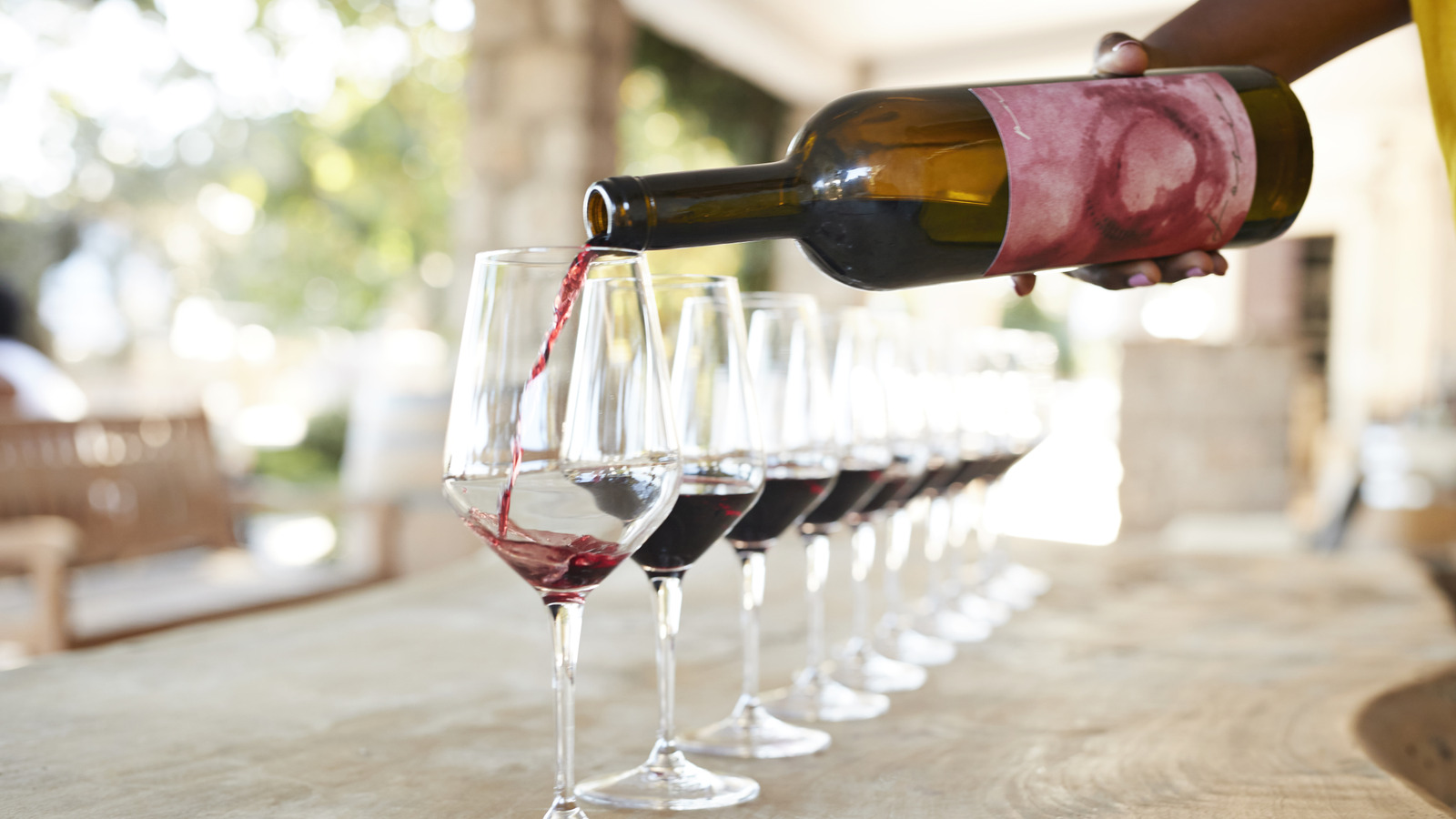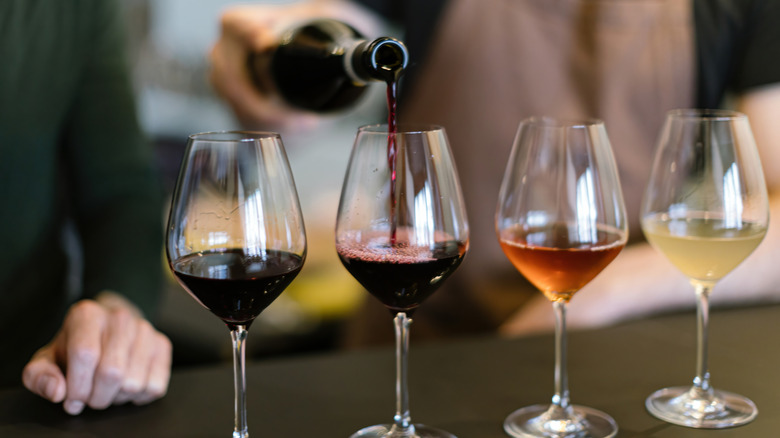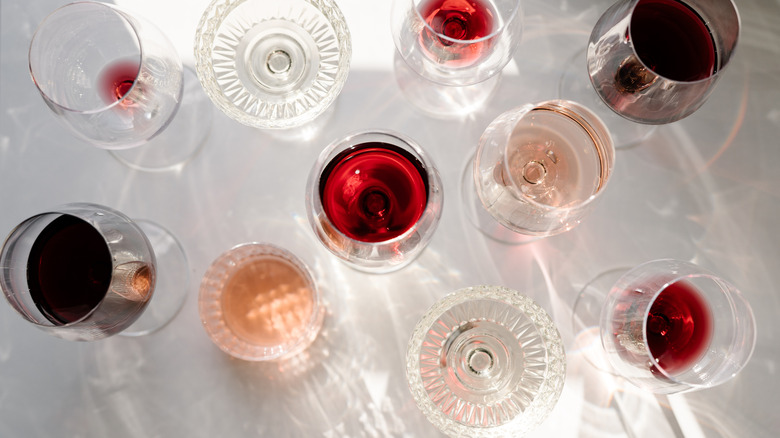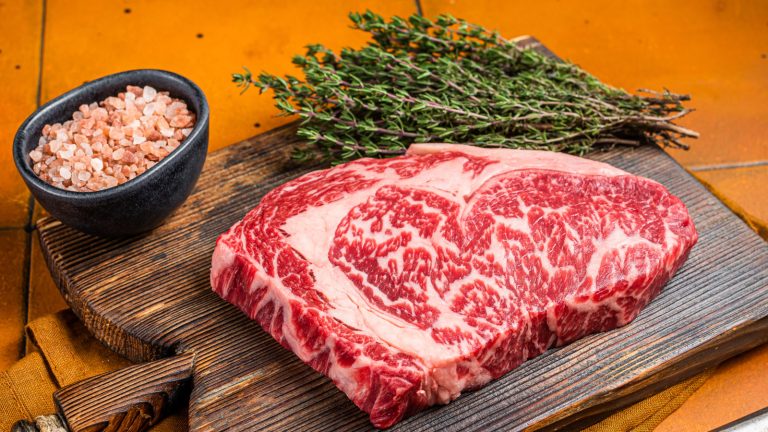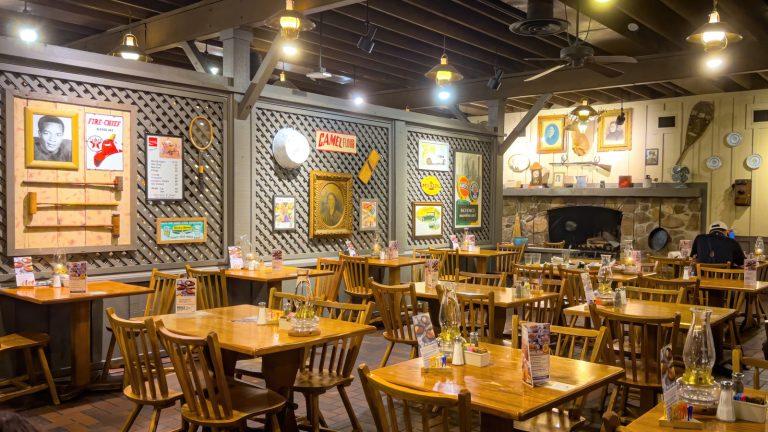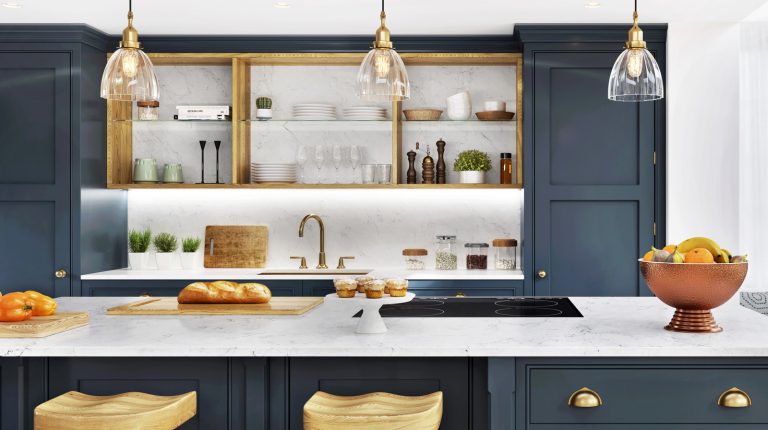We may receive a commission on purchases made from links.
Wine tastings are the perfect activity to celebrate a birthday, bachelorette party, or even just the arrival of the weekend. Sipping on a flight of reds, whites, and rosés sets you back an average of $40, depending on the winery. With a large group, the costs can add up quickly, especially if you plan on multiple tastings — and this doesn’t include a cab or shuttle for transportation (unless you have a designated driver). Instead, you might consider hosting a wine tasting at home, saving you money and allowing you to customize the flight to your guests’ preferences. You don’t need to be a certified sommelier to execute this, but what is key is having enough wine on hand.
Chowhound spoke to Helena Nicklin, drinks writer, broadcaster, and founder of HelenaSips Wine Academy, to break down how many bottles should be available at a home tasting, and how much wine should be served in each glass. If you’re going the minimalist route, Nicklin exclusively explained to us that “you can teach a lot just by showing two well-chosen, very different wines, as it’s highlighting the differences between them that will give your tasters plenty of ‘aha!’ moments.” These could be two bottles from a single winery, trying two different colors, or comparing different vintages.
Wine needed for a more extensive tasting
If two wines aren’t enough for your group, consider adding an additional bottle. While it may be tempting to choose a wine of each color, Helena Nicklin says, “Three is a good number if you’re just showing one color.” This more cohesive tasting format lets participants focus on the differences between grape varieties or a single grape variety from different wineries. For red wine lovers, this could mean featuring a cabernet sauvignon, a merlot, and a zinfandel, or sampling three cabernets from various wineries.
For a more robust tasting, like one you might partake in if visiting a winery, go for six bottles. According to Nicklin, “Six is a ‘proper’ tasting, but you’ll need a good hour and a half to do that justice! Any more than six and you will probably find your tasters losing some concentration.” This number presents the opportunity to offer several colors of wine: A good ratio would be two whites and four reds, as more people prefer red wines. With more wine bottles being served, choosing a theme helps give the event some structure and purpose. A tasting could be an opportunity to learn about the most underrated wine regions in the United States. Nicklin also offered a few creative ideas: “It can be as simple as wines from a certain country or region or something more stylistic, such as an international ‘Sips Safari’ of the chardonnay grape from different countries, or a walk through key styles of rosé.”
Amount of wine needed per guest and for groups
Luckily, it’s more straightforward to calculate how much wine you need for a tasting than the amount of bottles needed for a dinner party. Remember — you don’t pour full glasses for a tasting. Helena Nicklin recommends smaller pour sizes of 50 to 75 milliliters (a normal serving of wine is around 100 to 150 mL). Most bottles of wine contain a standard 750 milliliters per bottle, so you just need to do some easy division.
Let’s say you have five guests coming to participate in the tasting, and you’re pouring somewhere between 50 to 75 milliliters of wine per person. You could use an AmeriPour measured pourer, which assists you in serving a perfect 60 milliliters pour. Multiplying 60 milliliters by five guests equals 300 milliliters, which means you would have around 450 milliliters left over — a little more than half of the bottle — after tasting it. You can serve up to 12 guests with one bottle if pouring 60-milliliter tasting glasses. If you exceed that number in your party, you need to purchase a second bottle of each wine to be tasted. To serve up full glasses of wine after the tasting is over, here is how many regular glasses of wine are in a bottle.


